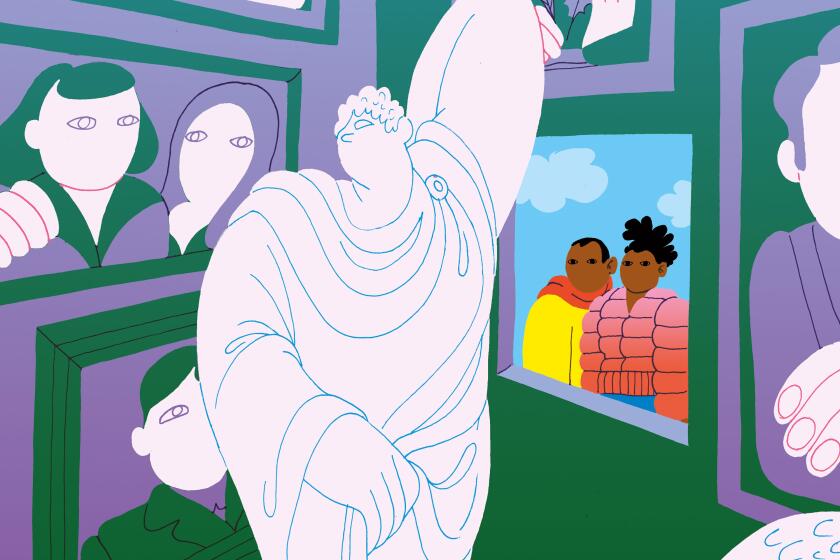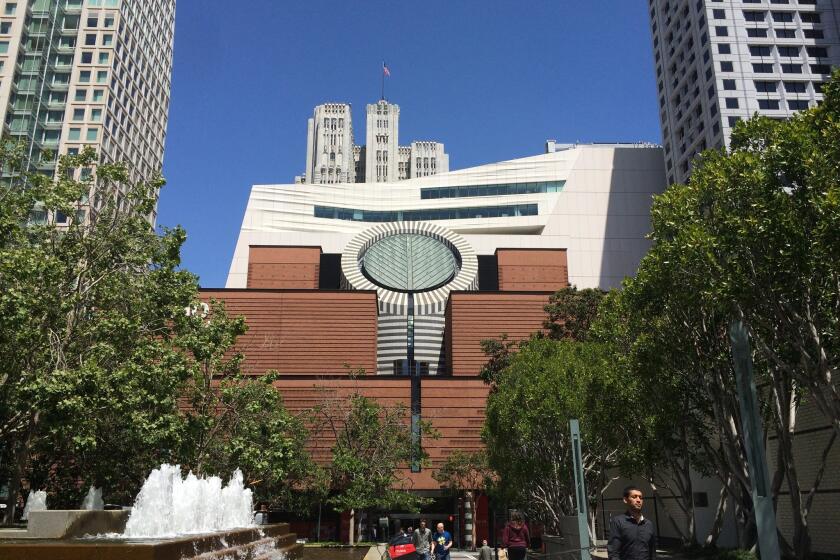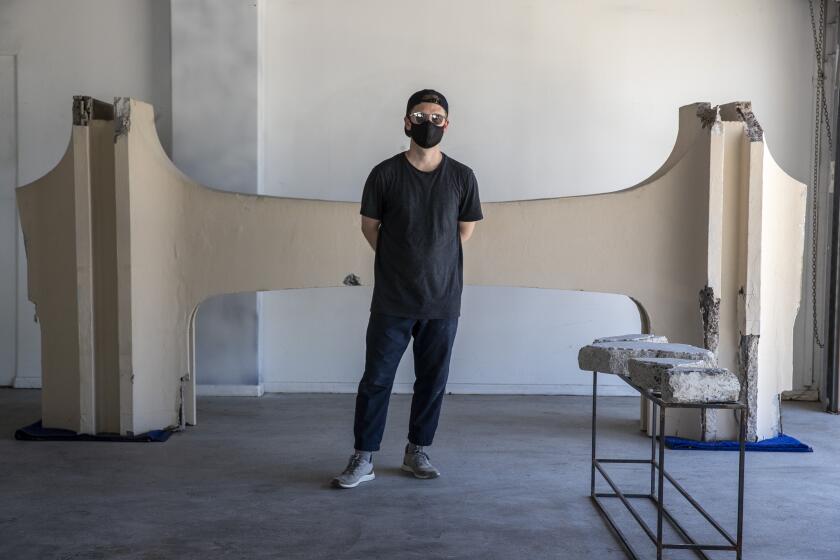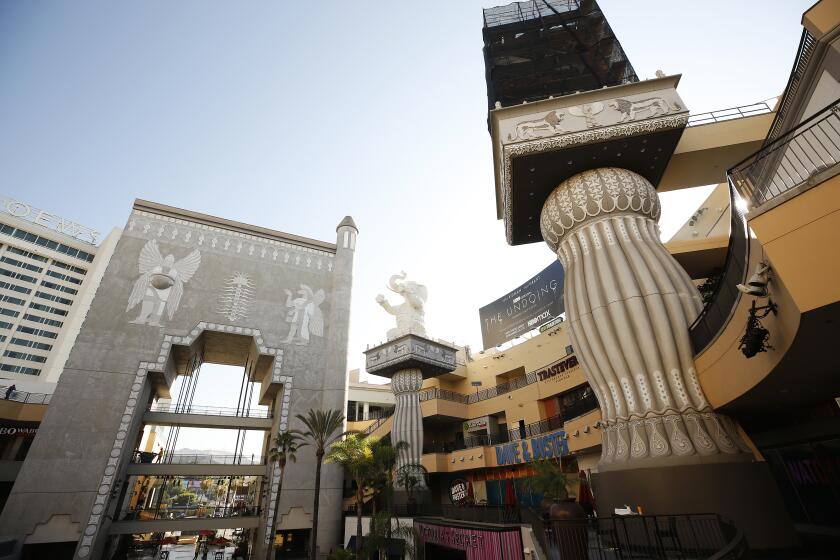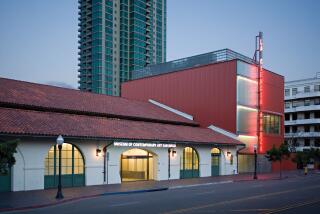New cuts show that SFMOMA seems hellbent on being boring and corporate
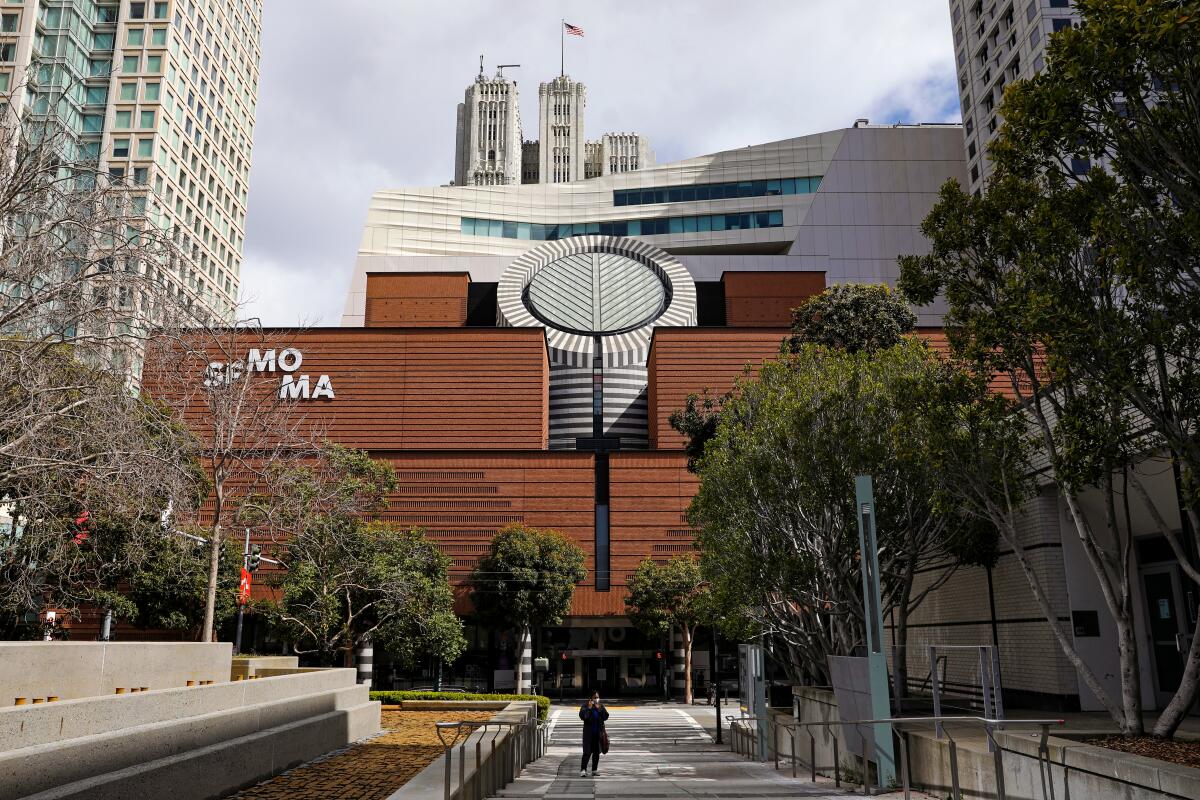
2020 was not a good year for the San Francisco Museum of Modern Art in the court of public opinion. And it doesn’t seem like 2021 is getting any better.
Last month, the San Francisco Chronicle reported that the museum was eliminating the museum’s online arts magazine, Open Space, launched in 2008, as well as its longtime film program, which dates to 1937. Also on the chopping block were SFMOMA’s “Raw Material” podcast, its Modern Art Council (a volunteer group that supports the museum’s fundraising and programming efforts and presents an annual artist award), as well as its off-site Artists Gallery, which sells and rents work by Bay Area artists to the public. The cuts will result in seven layoffs by the end of the year.
Much more than simply increasing diversity, the task ahead will consist of rethinking the very ways in which museums are governed.
In a statement later posted to its website, SFMOMA said that the changes were part of a “strategic refresh” and that the museum was looking to cultivate “a holistic visitor experience that attracts larger, more diverse audiences.”
The museum’s existing audiences are not having it.
On July 21, when the museum staged a virtual public board meeting with time set aside for public comment, Director Neal Benezra and the museum’s trustees faced a phalanx of artists, art professionals and San Francisco cultural workers who turned out to lambaste them. Attendees described the cuts as “shameful” and an “insult to art,” as noted in a detailed report about the meeting by Nastia Voynovskaya of KQED.
“Are you really telling the Bay Area that you spent the last year and a half forging diversity, equity and inclusion committees, to then eliminate the three most diverse and accessible programs that foster a sense of connection and support for local artists?” asked artist Lindsey White, chair of the photography department at the San Francisco Art Institute.
Three days later, protesters showed up at the museum bearing placards that read, “Stay Relevant” and “Save Open Space!!” Rick Prelinger, a noted filmmaker and archivist who teaches at UC Santa Cruz, was among those in attendance. “Every other museum is trying to figure out how to be hospitable and open it up,” he told Hyperallergic, “and this place is doing the opposite.”
And it’s not over: Another protest is planned for Thursday evening. In addition, a petition opposing the cuts has garnered more than 2,700 signatures on Change.org as of Wednesday afternoon.
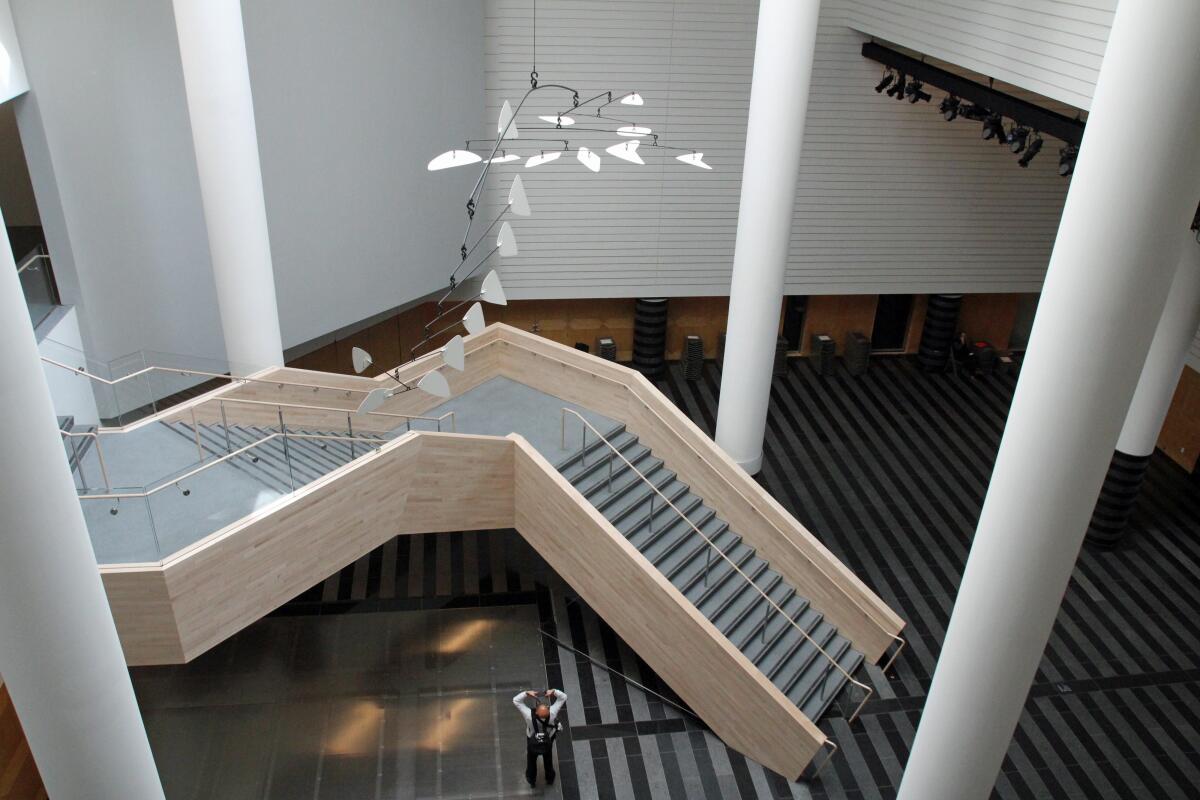
Certainly, the cuts are a curious way for SFMOMA to pursue a broader and more diverse audience.
Open Space is freely accessible online and over the course of its existence has published essays on a wide range of subjects by an even wider range of artists, curators and critics. This has included poetry, essays and criticism, as well as public programs, such as a 2017 series that examined the ways in which the AIDS epidemic have shaped culture. More recently, the site asked scholar LaNada War Jack and writer and artist Julian Brave NoiseCat to lead an issue devoted to the Indigenous occupation of Alcatraz. It included a poignant short story by Tommy Orange, author of the novel “There There,” a recipient of the 2019 American Book Award and a finalist for the Pulitzer Prize.
In other words, Open Space isn’t museum public relations churn disguised as “content.” The site’s editorial director, Claudia La Rocco, is a widely published essayist with a professional journalism background, having covered performance for the New York Times and other media outlets for a decade. (Full disclosure: I once participated in a conversation about arts journalism with New York-based culture writer Siddhartha Mitter for the site, but I did not accept compensation.)
In an era in which commercial galleries open at the scale of Home Depot, it comes as no surprise that museums are also in an arms race for maximum square footage.
SFMOMA’s film program was, likewise, wide-ranging in its ambitions.
In 2018, as part of its Modern Cinema series, the museum’s film team organized a two-week festival devoted to Black filmmakers titled “Black Powers.” It featured screenings of movies by influential directors from the “L.A. Rebellion” movement, such as Charles Burnett and Julie Dash, as well as more contemporary pictures, such as Jordan Peele’s “Get Out.”
The following year, for its “Haunted!” series, SFMOMA turned to Gothic tales inspired by female creators. That included Mary Shelley’s “Frankenstein” and Ana Lily Amirpour’s “A Girl Walks Home Alone at Night,” a film that fused Iranian and Western themes into a story about vampires.
The film program was no add-on. Gina Basso, its director, worked within the curatorial division, making it an intrinsic part of the museum’s artistic offerings.
“Film is the quintessential art form of the 20th century; it continues to be one for the 21st century,” Basso told me via telephone last week. “The museum collects artists who straddle art and the film world: Apichatpong Weerasethakul and Steve McQueen and Miranda July. And Bruce Conner. Artists who have equally important practices working outside the gallery context.”
Basso declined to answer any questions about SFMOMA’s internal politics or discuss specifics about the cuts, but she did say that the elimination of the program would chip away at San Francisco’s film scene.
“I have often brought up the fragile ecosystem of the film community,” she says. “These are networks that are very delicate. And you take away one thing and it creates an incredible imbalance.”
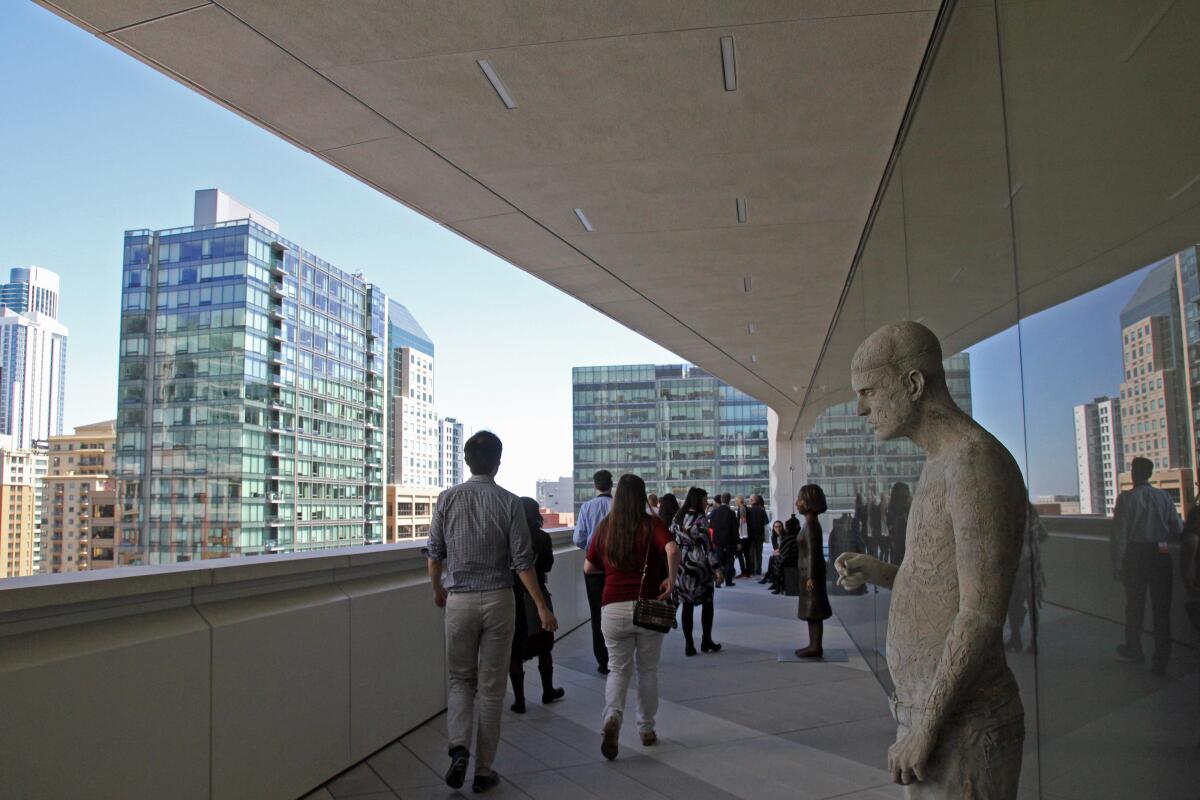
Certainly, there are financial reasons SFMOMA can point to in justifying the cuts.
Like all museums, it was battered by the COVID-19 pandemic. In March 2020, SFMOMA laid off and furloughed hundreds of employees; it is unclear how many of those positions have been reinstated. And a spokesperson says the museum reported a $4-million deficit for fiscal year 2020.
But $4 million is hardly insurmountable for an institution whose annual budget hovered just below $100 million in the years before the pandemic and whose board features billionaires such as financier Charles Schwab. In addition, SFMOMA is no stranger to red ink, having run deficits of $5 million and almost $12 million in 2017 and 2018, respectively, according to 990 tax forms filed with the IRS. A 990 filed in 2019, the last year for which these are publicly available, showed a surplus of $25 million.
In addition, KQED reported that Benezra sent an internal email to staff noting that the savings generated by the elimination of these programs would be “minimal at best” and that the cuts were more in keeping with the institution’s “strategic refresh.”
The timing for all of this is certainly odd. Earlier this year, Benezra announced that he’d be stepping down from the role of director, and it would seem that such major strategic shifts would be best left in the hands of his successor. Especially as Benezra’s time in the director’s chair has not been without controversy. (A successor has yet to be named.)
SFMOMA has for many years contended with hard questions over representation and equity. In 2019, representatives for the museum refused to answer the basic question of whether there were any Black curators on staff. Last year, in the wake of the uprisings, the museum deleted comments critical of the institution by a former Black staffer on social media. After that, a senior curator was forced to resign over comments about “reverse discrimination” in connection with white male artists.
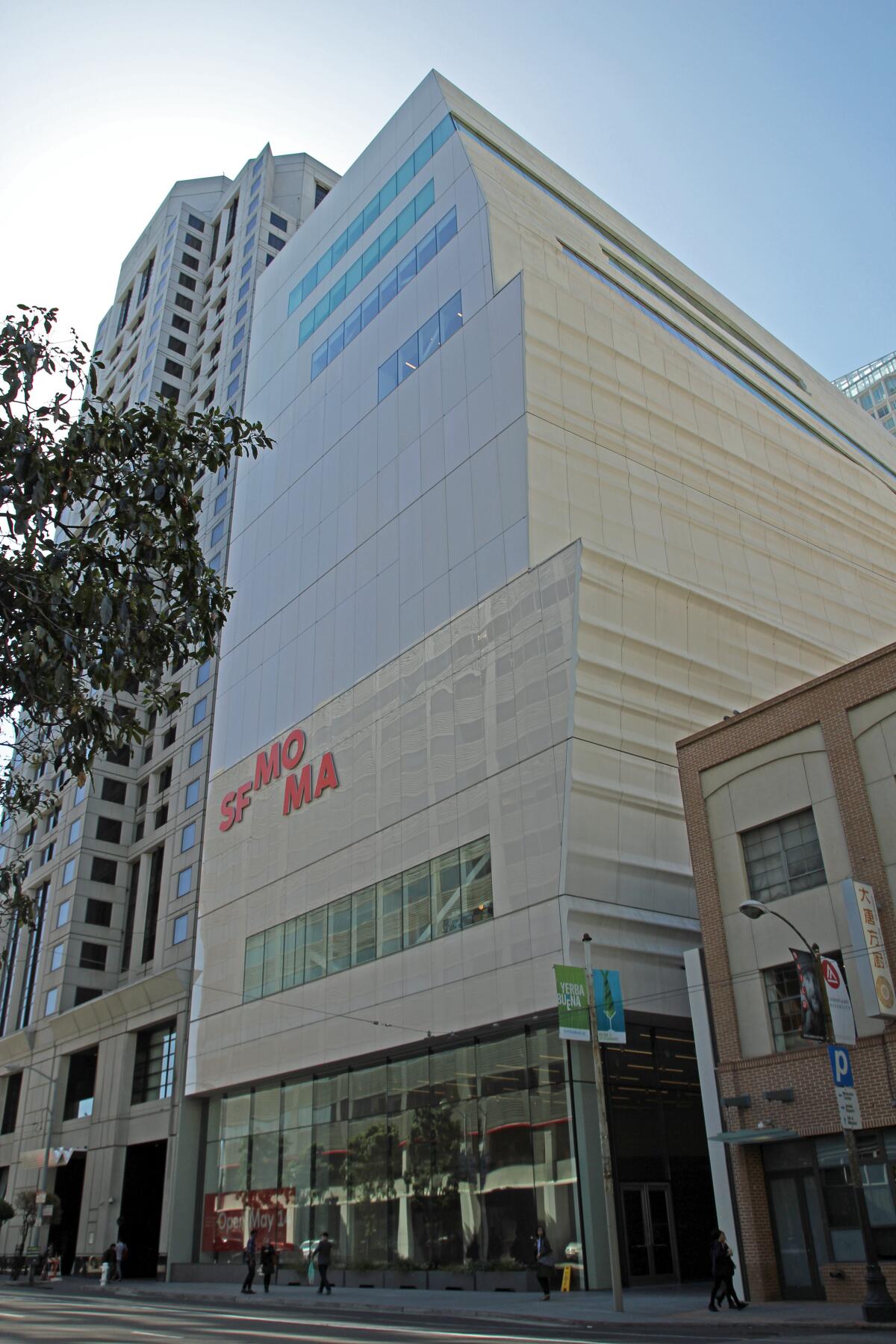
As outlined in SFMOMA’s strategic statement, the refresh appears to consist largely of increasing attendance to the museum. Bullet points include “investing in programs and exhibits that drive visitors to the museum,” “focusing on the production of educational content that directly supports the in-gallery visitor experience” and “sunsetting programs that do not drive attendance at the museum, including the Film Program ... and the Artists Gallery...”
The last item on the list suggests “modernizing the retail strategy by investing in new product development.” (New merch will save the museum!) It’s a strategy that reeks of business consultant-speak.
If the museum really wants to improve its reach and the diversity of its audiences, it should undertake a fundraising campaign so it can drop its prohibitive admission fees. SFMOMA charges $25 per adult at a time when many other museums are scrapping fees altogether. And if you’re a local hoping for discounted admission, tough noogies. The most you qualify for is free admission during a four-hour window once a month.
Part of this may be because the museum still counts on admission fees to supplement its budget. In fact, admission fees made up almost 11% of the museum’s budget, according to the 990 tax forms filed in 2019.
Admission revenues, however, won’t begin to solve the problem at the heart of SFMOMA, which is the museum itself.
Motivating SFMOMA’s $305-million, 235,000-square-foot expansion in 2016 was the long-term loan of the Fisher Collection, assembled by Gap founders Donald and Doris Fisher. A majority of the museum’s real estate has been turned over to showcasing this collection — a loan; not a promised gift — that is appropriately renowned for its Ellsworth Kellys, its Agnes Martins and its Anselm Kiefers. It is the bluest of blue chip. It is also exceedingly white and exceedingly male. When the new wing first opened five years ago, an entire floor of galleries didn’t contain a single work by a woman.
Cayetano Ferrer has preserved fragments of LACMA’s William Pereira-designed facades and will employ them in a newly approved park near West Hollywood’s Pacific Design Center.
The details behind the Fishers’ loan remain largely unknown, despite the best reporting attempts of Charles Desmarais, the former art critic for the San Francisco Chronicle, who was able to ascertain a few facts about the deal. Among them: that no more than 25% of what is on view in the Doris and Donald Fisher Collection Galleries is allowed to come from other lenders or donors.
As Desmarais wrote at the time, this “means that something like 60% of SFMOMA’s indoor galleries (not counting free-admission areas that serve as combination lobby and exhibition spaces) must always adhere — or, at least, respond — to a narrative of art history constructed by just two astute but obdurately private collectors.”
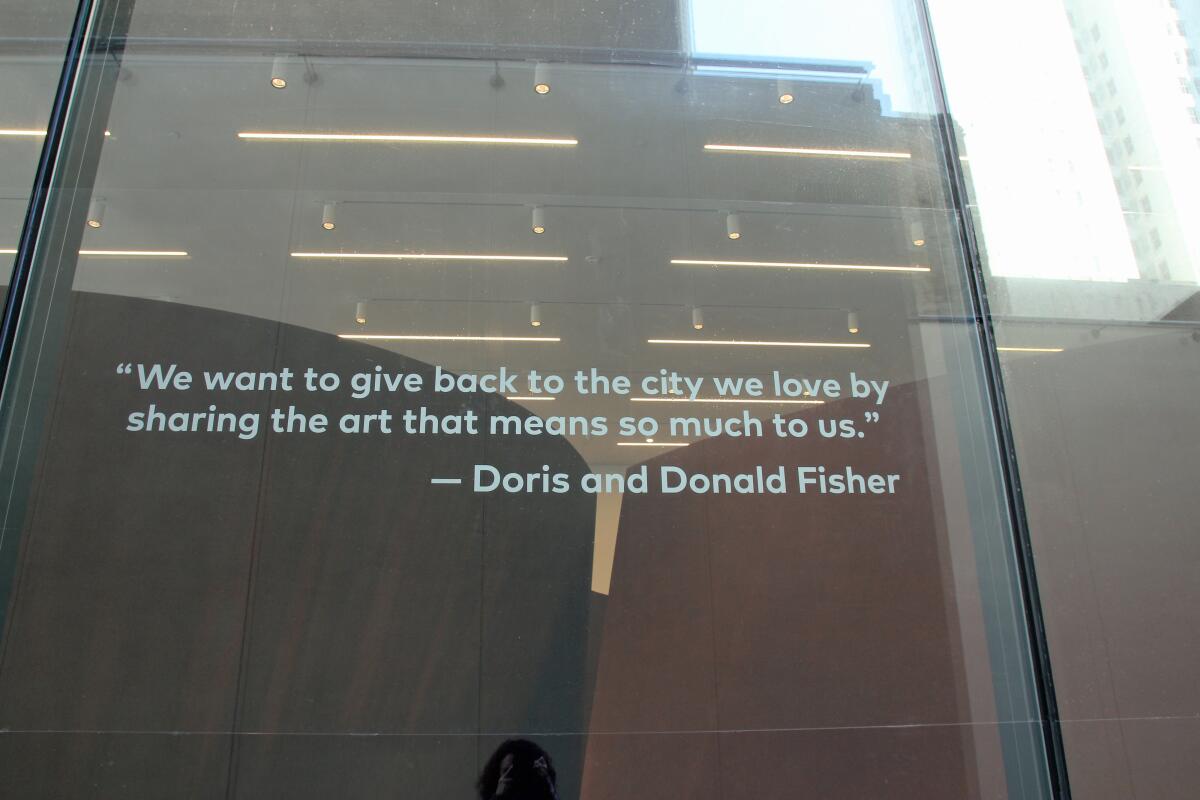
This means that repeat visits to SFMOMA are liable to feel the same, since much of the art in the new wing has to be, by terms of the contract, art that belonged to the Fishers.
By my third visit to the museum after its reopening, I started to feel suffocated by the installation: Expressionists in one room, Color Field paintings in another, no surprises — just a single path of art history, one with no room for anything that evokes even a hint of Bay Area weirdness, queer activism or Chicano printmaking. It’s a collection that acts as if San Francisco — or much of the rest of California, for that matter — doesn’t exist.
It’s boring and corporate and feels like an albatross around the museum’s neck — something for the curators to work around, rather than work with.
Platforms such as Open Space and the film program examined the ragged edges of culture, the places full of friction and debate. They may have not had massive audiences, but they incorporated a wide range of voices and made many of us feel as if there were at least one corner of the museum that cared about what Latino, Indigenous, Black and queer artists had to say about the world.
Now, those programs will be gone. And no amount of fancy-pants design in the gift shop is going to make up for it.
The complex is erasing the Babylon-themed homage to D.W. Griffith, director of the racist film “The Birth of a Nation.”
More to Read
The biggest entertainment stories
Get our big stories about Hollywood, film, television, music, arts, culture and more right in your inbox as soon as they publish.
You may occasionally receive promotional content from the Los Angeles Times.
